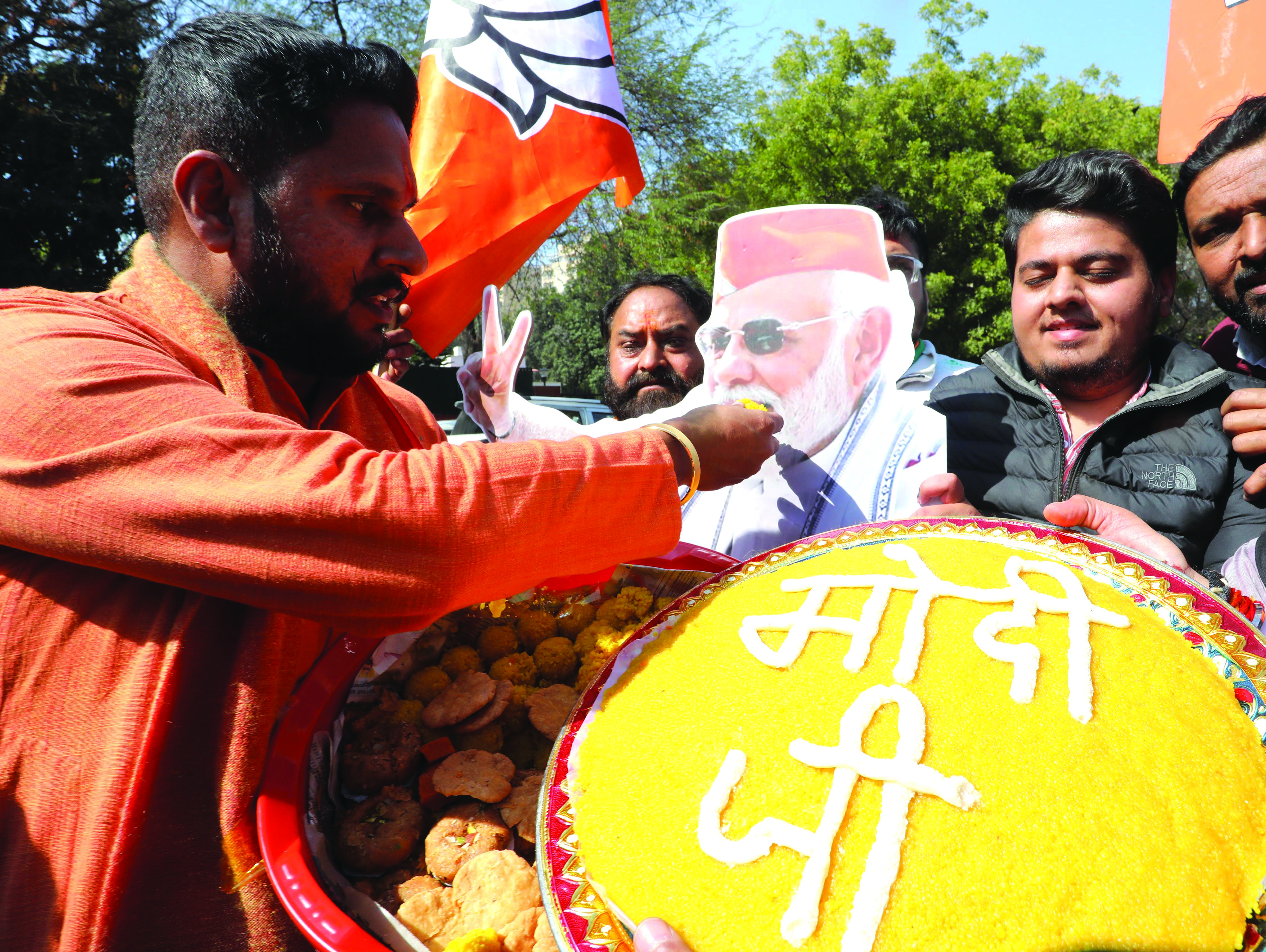
New Delhi, Feb. 8 -- In a stunning political turnaround, the BJP claimed victory in the 2025 Delhi Assembly elections, ending a 27-year wait to wrest power from the AAP. The results marked a dramatic shift in the capital's political landscape. The AAP, which had dominated the previous two elections in 2015 and 2020, saw its vote share dip by nearly 10 percentage points. While the defeat was a blow for the party several factors contributed to AAP's downfall. Here is a lowdown on those factors:
AAP's big losses
Kejriwal lost the New Delhi seat, with Parvesh Sahib Singh Verma securing 30,088 votes and Kejriwal 25,999. Voter registration dropped by 37,558, from 1,46,122 in 2020 to 1,08,564 in 2025. Kejriwal's votes fell by 20,000 compared to 2020. High voter deletions occurred in areas like Kali Bari Marg, Sarojini Nagar, and Sunehri Bagh Lane due to demolitions and relocations, especially affecting AAP supporters. Additionally, the BJP's outreach to Valmikis and Pahadis, along with the 2025 budget, helped boost their chances.
Furthermore, Deputy CM Manish Sisodia lost to BJP's Tarvinder Singh Marwah by just 600 votes in Jangpura. Saurabh Bharadwaj also lost the Greater Kailash seat to BJP's Shikha Roy, who won by around 3,000 votes. Roy received 49,370 votes, while Bharadwaj got 46,231 votes, finishing second. Congress' Garvit Singhvi came third with 6,677 votes.
Unfulfilled promises
One of the primary reasons for AAP's defeat lies in its failure to fulfill key promises made during its earlier campaigns. Arvind Kejriwal, who had garnered significant support with his promises of improved infrastructure, cleaner streets and better public services, found himself at odds with a dissatisfied electorate. Kejriwal himself admitted: "I have failed to fulfill three promises: cleaning the Yamuna, providing clean drinking water, and upgrading Delhi's roads." This statement only gave the BJP ammunition for its attack.
Voters, particularly from middle-and upper-middle-class constituencies, were increasingly frustrated by the lack of progress on these issues. "People wanted change. They were tired with AAP's promises," said Shikha Kumari, a resident of Jangpura. "The party has only focused on Jhuggis and nowhere else. Delhi is an urban city, most of the people belong to middle class, the party has done nothing for them."
In eye of corruption storm
Another factor that severely damaged AAP's reputation was the corruption scandals that tainted the party's image. The controversial liquor policy, which was scrapped after allegations of kickbacks, led to probes by central agencies. The subsequent arrest of key leaders, including Manish Sisodia, Sanjay Singh, and Arvind Kejriwal, placed the party on the back foot. The BJP made sure to highlight these controversies, accusing AAP of turning Delhi into a "city of drunkards." "The allegations on AAP and their unfulfilled promises is a major reason for their loss," said Sukhbir Singh, a resident of Greater Kailash, "All the leaders and big faces of AAP who went to Jail for the corruption case, they all have lost."
Shifting alliances
The 2025 elections also saw several high-profile political shifts, with former members of the Congress, BJP and AAP switching allegiances. In Gandhi Nagar, BJP's Arvinder Singh Lovely, a former Delhi Congress chief, secured victory, defeating AAP's Naveen Chaudhary. Similarly, in Jangpura, BJP's Tarvinder Singh Marwah, a former Congress MLA, narrowly defeated AAP's Manish Sisodia. Sisodia, who had shifted from Patparganj to Jangpura, conceded defeat but hoped that the winning party would "work for the welfare of the constituency." The lack of an alliance between AAP and Congress also played a role in the outcome. Although Congress candidates lost in several constituencies, their presence still siphoned votes from AAP.
Freebies lose charm
AAP's strategy of offering "freebies" like free electricity and bus rides for women, which had been a key factor in its earlier victories, no longer had the same appeal. The lack of focus on infrastructure and development led to widespread discontent, particularly among voters who expected more tangible improvements in urban amenities. "Overflowing drains, potholed roads, and irregular garbage collection contributed to the party's unpopularity," said a political commentator. One resident from ITO, who had previously worked with the AAP, shared: "The party whose name itself starts with Aam Aadmi, if they would not think about the common people, on what ground they will vote. I have worked with AAP previously for years but we never got payments on time."
The road ahead for AAP
In the aftermath of its defeat, AAP has acknowledged its shortcomings. Senior party leaders have vowed to reassess their strategies and focus on addressing the grievances of Delhi's electorate. "We will go to the ground and look into where we faltered. Our work for the public will not stop," a senior AAP leader stated.
However, the road to redemption is likely to be long. The AAP now faces the challenge of rebuilding its image, particularly among the middle class, which has grown disillusioned with the party's promises of change and better governance.
As the dust settles from the 2025 Delhi Assembly elections, the BJP's victory reflects not only its effective campaigning but also a growing discontent with the AAP's unfulfilled promises and scandal-plagued tenure. The capital's political future now seems firmly in the hands of the BJP, while the AAP's struggle to regain trust and credibility begins anew.
Published by HT Digital Content Services with permission from Millennium Post.
